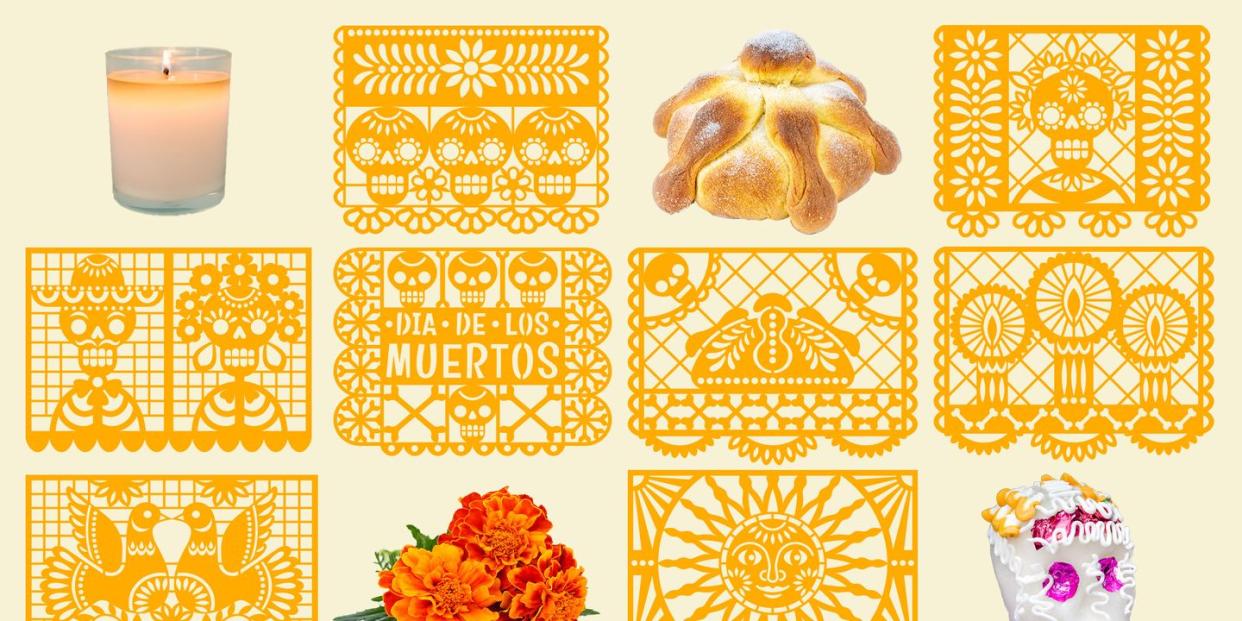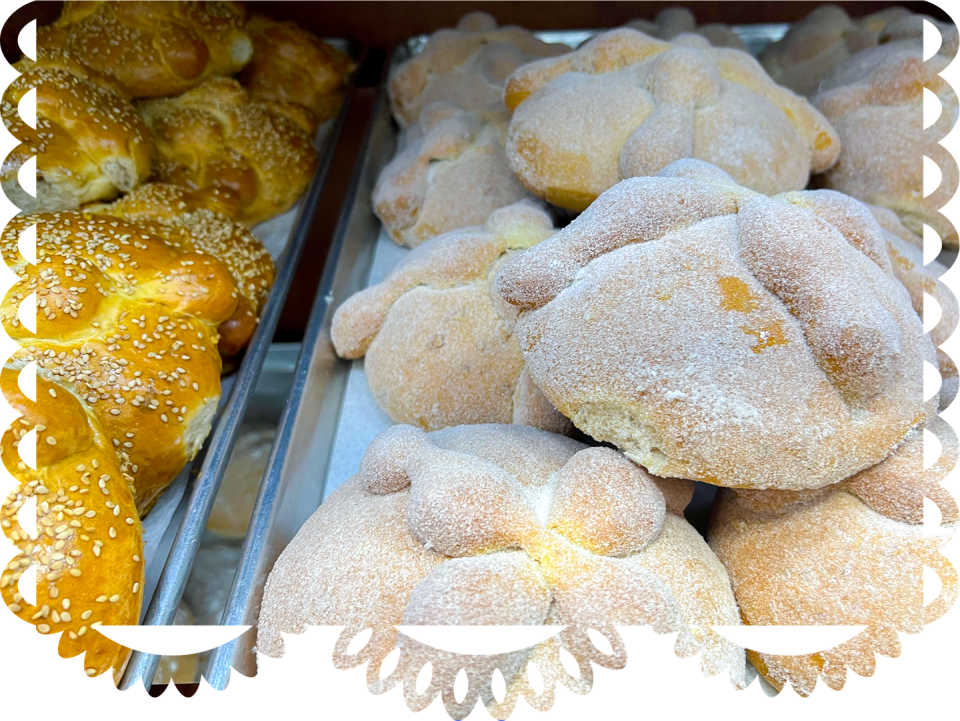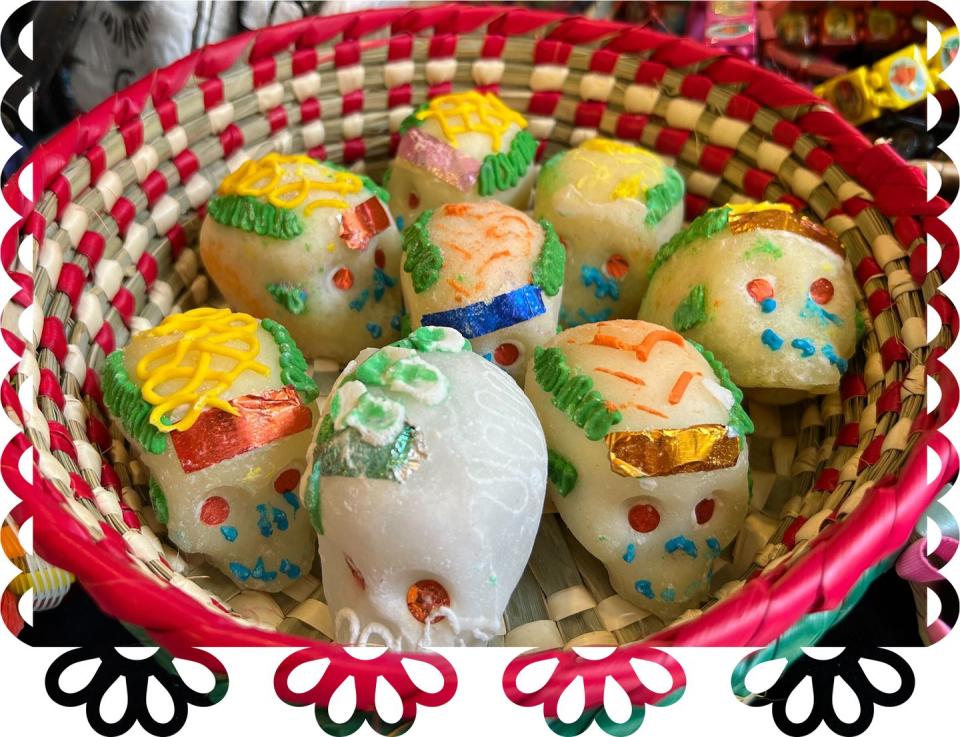The Mexican Tradition Of Día de Muertos Celebrates Life Through Food And Drink

Sugar skulls, brightly painted faces, and vibrant marigolds—no, it’s not Mexican Halloween. Día de Muertos, a holiday that commemorates those who have died, is a joyful celebration of life. And one of the biggest components of the tradition is food.
While food and drink play are an important role in most celebrations around the world, they have a deeper meaning when it comes to Día de Muertos.
“In Mexico, as in many parts of the world, food is the language we can best communicate and share our love and appreciation among family, friends, and community,” said Mariana Nuño Ruiz, co-author of the cookbook Dining with the Dead.
“Día de Muertos is one of the most beloved Mexican traditions,” she said. “We believe our beloved ones’ souls return each year during November 1 and 2 to visit us and stay with us one night. We honor and remember them by celebrating with them, preparing the food, the music, and the objects they once enjoyed in life.”
The history of Día de Muertos is rooted in the traditions of indigenous communities of ancient Mesoamerica who believed life to be cyclical and death to be a component of this. On November 1 and 2, families visit cemeteries and create ofrendas, or altars, and decorate them with candles, photos of loved ones who have passed away, and their favorite foods and drinks. Other traditional decorative elements include sugar skulls; copal, which is a resin that’s burned like incense; and cempasúchil, or marigolds, which guide spirits with their scent and color.
“The ultimate ofrenda on the altar is pan de muerto, a delicious round bread decorated with a cross made of bones and a small round ball on top representing a skull,” said Nuño Ruiz. It’s made with cinnamon, orange blossom water, and orange zest, which she said is believed to lure souls to the ofrenda.

“Eating pan de muerto is our way to commune and celebrate with the souls of our departed,” she said.
While placed on the ofrenda as an offering, pan de muerto is also eaten throughout the weeks leading up to Día de Muertos. On a recent Saturday at Tulcingo Bakery in New York City’s Jackson Heights neighborhood, customers piled pan de muerto and other pan dulce on trays to bring home.
The Mexican bakery has been in the neighborhood for about 20 years, selling desserts like tres leches, grocery items, and, every October, all of the essentials needed to create an ofrenda.
Sugar skulls represent a loved one who has passed away. At La Sirena, a Mexican folk art store in New York City, customers can find several handcrafted sugar skulls imported directly from artisans in Mexico. Over the 24 years La Sirena has been in business, owner Dina Leor has kept up a museum-like display of Mexican art and culture.

“Other delicious traditional foods are made during these festivities, usually celebratory foods like tamales, pozole, moles, atoles, calabaza en tacha (braised pumpkin in piloncillo and canela syrup), and of course, our departeds’ favorite dishes and drinks,” said Nuño Ruiz.
Día de Muertos celebrations have taken place for years in the U.S., especially in cities with large Mexican-American populations. The holiday has also gained more mainstream visibility, whether that’s a result of appreciation for Mexican culture or its popularity in pop culture. It wasn’t until the James Bond movie Spectre came out, featuring a Día de Muertos celebration in Mexico City, that the city decided to begin hosting an annual parade, according to the BBC.
“It’s definitely been practiced a lot, which I love, because that’s how we get to show other people who are not Latinos or Hispanics. We also show them our culture,” said Yariel Lucero, whose in-laws own Tulcingo Bakery. “I think the Mexican culture is just beautiful all around.”
It was about six years ago when he began to see the celebration become more popular. For Leor, it was after the movie Coco was released in 2017.
“I kind of believe, we’re all human beings and if we get something from another culture and we’re not disrespecting it, then I don’t think there’s anything wrong with it,” said Leor, who calls herself an “Argentine-American with a Mexican heart.” She’s been visiting Mexico since she was a child.
“As long as you [celebrate] in a respectful way and you respect somebody’s culture, by all means, it’s fine,” Lucero said.
You Might Also Like

